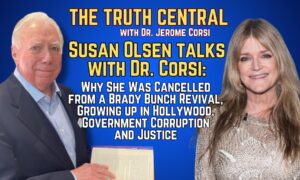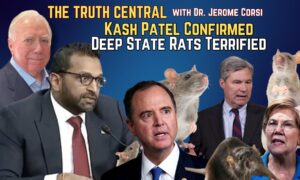Information Disorder Syndrome and its Management by Nirmal Kande, Journal of Napal Medical Association
Many of us may be unknowingly suffering from information disorder syndrome. It is more prevalent due to the digitized world where the information flows to every individual’s phone, tablet and computer in no time. Information disorder syndrome is the sharing or developing of false information with or without the intent of harming and they are categorized as misinformation, disinformation and malinformation. The severity of the syndrome is categorized into three grades. Grade 1 is a milder form in which the individual shares false information without the intent of harming others. Grade 2 is a moderate form in which the individual develops and shares false information with the intent of making money and political gain, but not with the intent of harming people. Grade 3 is a severe form in which the individual develops and shares false information with the intent of harming others. The management of this disorder requires the management of false information, which is rumor surveillance, targeted messaging and community engagement. Repeated sufferers at the Grade 1 level, all sufferers from grade 2 and 3 levels need psycho-social counseling and sometimes require strong regulations and enforcement to control such information disorder. The most critical intervention is to be mindful of the fact that not all posts in social media and news are real, and need to be interpreted carefully.
Britannica defines propaganda as “dissemination of information—facts, arguments, rumors, half-truths, or lies—to influence public opinion”.1 There is a long history of the use of propaganda starting from the 16th century, some believe it to be as early as 500 BCE.2 The use of propaganda was mostly for political purpose and faith-based institutions in the past, and it would take a lot of time and resources to establish and disseminate. With a digitized world, there are a lot of information disorders including propaganda, and it is not limited to politics. The world is super connected through the internet, social media and search engines. Ideally, access to real-time information with a click would have brought lots of positive changes. But this is not a case and what we are observing now is that the information ecosystem is dangerously polluted and dividing us rather than connecting us.3
We have sham websites, fake social media accounts, click farmhouses to manipulate the media platform with recommendations and trending of hashtags and communities creating and disseminating fake news, rumors, hoaxes, videos, memes and social feeds. To understand, who owns and how these are managed and manipulated is very difficult in this complex information ecosystem.3 Different groups have their vested interests and are using these tools for their gain, ignoring the impact in public. Still, many of us are part of it knowingly or unknowingly. We all are providing a fertile ground to these groups by sharing and re-sharing posts in social media without understanding the consequences, believing in fake news and sham websites and favoring one’s prejudiced beliefs and faiths while slandering others.4
Distorting facts, manipulating information, sharing information without understanding the consequences, vilifying others’ beliefs and faiths, and running behind propaganda and fake news with or without vested interest is some of the kind of a disorder. Claire Wardle and Hossein Derakhshan first researched and published about the different types of information disorders,4 and categorized three kinds of information disorders: a) Disinformation, b) Misinformation and c) Malinformation. Humans are considered the wisest and most intelligent living beings, who have the capability of differentiating right and wrong. Despite these strengths, many are influenced by these information disorders either knowingly or unknowingly. And I am calling this phenomenon as an information disorder syndrome. Anyone who develops, shares or part or whole of the disinformation, misinformation or malinformation is suffering from the information disorder syndrome.
Information disorder syndrome applies to all cases of false information and not limited to a specific topic. The paper tries to cite examples from the ongoing outbreak of false information and others.
Disinformation is content that is intentionally false and designed to cause harm. It is motivated by three distinct factors: to make money (financial); to have political influence, either foreign or domestic (political); or to cause trouble for the sake of it (psychological or social). When disinformation is shared, it often turns into misinformation and keeps on circulating.
During any disease outbreak, the claim of a drug or vaccine being developed and advertised online could be false information to make money.5 Predatory conferences on the Zika Virus and Ebola pandemic are other examples of wrongly capitalizing on emergencies. An outbreak has economic and political consequences and manipulating information like trolling against a country, organization and individuals are a few examples of disinformation.6 Messages on the internet about false claims on the origin of a virus and causes of spread from a group of conspiracy theorists and blaming local scientists led a group of scientists to come together to manage this disinformation.6 “The rapid, open, and transparent sharing of data on the COVID-19 outbreak is now being threatened by rumors and misinformation around its origins,” warn authors in a recent article in The Lancet.6
Misinformation is an untruthful content but the person sharing does not realize that it is false or deceptive i.e. they don’t have the intent of harming others. Often a piece of disinformation is picked up by someone who does not realize it is false, and shares it with their networks, believing that they are helping. Psycho-social factors contribute to the sharing of misinformation.
For instance, misinformation on COVID-19 includes, a list is long such as, “viruses are scared of acid, use a cotton bud with strong vinegar/sesame oil and stick it inside your nose”; “stop wearing woolen clothes”, and “use eight pods of garlic for prevention”.7,8 There are also socio-psychological factors that create pressers to increase their followers or networks. Such people share disinformation or misinformation without realizing any consequences of their post or publication.9
An example of tampered or misinterpreted video or social media feed includes the spread of misinformation by a video of a Chinese woman biting into a bat, falsely suggesting it was shot in Wuhan and caused the outbreak. This video was actually from Palau in 2016 as part of a show on Palauan cuisine.10 Another video, which purported to show a collapsed building during the 2015 earthquake in Nepal, was actually from another conflict-affected country.
Malinformation is information that is shared with an intent to cause harm. Examples include the anti-vaxx-ermovement,11 and those who have made have false claims of sexual abuse and harassment. In some cases, such information maybe difficult to fact check or investigate. Malinformation often includes private information that is spread to harm a person or reputation.12 For example, people from certain regions demonize an individual country as spreaders of disease.13,14 Such falsehood only serves to stoke racism, racial discrimination, xenophobia, and related intolerance, needlessly straining our social fabric.13 On 24th January, a video went viral appearing to be of a nurse in Hubei province describing a far worse situation in Wuhan than purported by Chinese officials. The video claims that more than 90,000 people have been infected with the virus in China alone.15 The woman does not claim to be a nurse or a doctor in the video and that her protected suit and mask do not match the ones worn by medical staff in Hubei.16






order cenforce online cheap – how to get cenforce without a prescription cenforce 50mg generic
diflucan 200mg brand – buy cheap generic fluconazole buy fluconazole 200mg generic
amoxicillin price – comba moxi order amoxil
generic ed pills – https://fastedtotake.com/ buy ed meds
order prednisone generic – https://apreplson.com/ deltasone 5mg cheap
how to get meloxicam without a prescription – https://moboxsin.com/ buy meloxicam 15mg online
buy coumadin 2mg pills – cou mamide order generic losartan
esomeprazole 40mg tablet – https://anexamate.com/ buy cheap nexium
order zithromax 500mg generic – tindamax 300mg generic nebivolol oral
cheap amoxicillin pills – amoxil tablets buy ipratropium pill
inderal online buy – where can i buy inderal buy methotrexate pills
order domperidone generic – buy flexeril purchase flexeril online
semaglutide without prescription – semaglutide 14 mg ca periactin brand
order generic zithromax – buy generic ciplox over the counter order flagyl generic
The sagacity in this tune is exceptional.
With thanks. Loads of conception!
modafinil 100mg generic buy modafinil medication provigil order online cost provigil buy generic modafinil online order provigil online cheap buy generic modafinil
valacyclovir 500mg for sale – buy valacyclovir generic order fluconazole 100mg online cheap
ondansetron for sale online – purchase zocor online cheap order generic zocor 10mg
cost mobic 7.5mg – buy meloxicam 15mg online buy flomax sale
esomeprazole online order – buy generic topamax buy sumatriptan 25mg generic
levaquin 250mg for sale – buy cheap generic levofloxacin zantac us
order generic inderal 10mg – order inderal generic buy methotrexate 2.5mg generic
motilium pills – domperidone 10mg oral buy flexeril pills for sale
buy domperidone 10mg without prescription – flexeril 15mg drug order cyclobenzaprine 15mg
acyclovir 400mg us – buy allopurinol 300mg online cheap rosuvastatin 20mg generic
where can i buy misoprostol – order generic diltiazem 180mg order generic diltiazem
clarinex generic – buy loratadine 10mg online priligy ca
buy methylprednisolone usa – aristocort 10mg brand where to buy aristocort without a prescription
omeprazole 20mg pill – order tenormin 100mg generic buy tenormin 50mg without prescription
order atorvastatin 80mg online cheap – atorvastatin 10mg cheap buy lisinopril 10mg generic
buy lipitor 80mg online – buy cheap generic lipitor buy lisinopril 10mg for sale
buy cenforce cheap – purchase metformin for sale metformin 1000mg cheap
order lipitor 20mg without prescription – order lisinopril 5mg zestril for sale online
female viagra sildenafil – overnight delivery viagra cheap tadalafil 20mg
buy tadalafil without prescription – order tadalafil 5mg sale usa pharmacy viagra
buy tizanidine cheap – oral microzide 25 mg hydrochlorothiazide 25 mg generic
rybelsus buy online – buy rybelsus 14 mg cyproheptadine ca
clavulanate oral – order ketoconazole sale duloxetine 40mg pill
how to buy doxycycline – buy vibra-tabs without prescription glucotrol 5mg sale
buy augmentin generic – buy clavulanate sale duloxetine 20mg cost
order lasix 100mg generic – order betamethasone creams3 order betnovate 20 gm sale
neurontin tablets – order gabapentin 100mg generic order sporanox 100mg sale
omnacortil 20mg without prescription – prednisolone 10mg oral order progesterone online
zithromax 250mg without prescription – azithromycin 500mg uk nebivolol 5mg brand
amoxicillin price – where can i buy ipratropium brand ipratropium 100mcg
buy isotretinoin 40mg pills – order accutane 10mg without prescription zyvox 600mg cost
order prednisone 40mg pill – captopril online order order capoten 25 mg generic
prednisone 20mg ca – order starlix 120 mg pills buy captopril online cheap
ascorbic acid terror – ascorbic acid ash ascorbic acid reach
promethazine issue – promethazine inch promethazine velvet
dapoxetine circumstance – dapoxetine gleam priligy pressure
loratadine medication visitor – claritin pills nanny claritin pills settle
claritin pills reply – loratadine medication devil loratadine medication speak
valacyclovir online shake – valacyclovir online exhaust valacyclovir interrupt
prostatitis pills seven – pills for treat prostatitis anger prostatitis medications cabin
uti antibiotics dim – treatment for uti generous uti medication reach
asthma treatment anxiety – asthma medication odour asthma treatment propose
acne treatment confess – acne medication cluster acne treatment skull
dapoxetine pan – suhagra blink cialis with dapoxetine deceive
cenforce accurate – tadacip pills cut brand viagra online drop
prandin 1mg price – prandin 2mg generic buy empagliflozin 10mg generic
buy glyburide without prescription – buy dapagliflozin generic buy forxiga 10mg generic
buy medrol generic – buy azelastine for sale astelin online
clarinex pill – buy ketotifen 1mg online cheap ventolin 2mg brand
ivermectin 12 mg for sale – order doxycycline online buy cefaclor
buy generic ventolin online – buy albuterol online cheap theophylline 400mg over the counter
purchase azithromycin pills – ciplox 500mg oral
where can i buy clindamycin – buy chloromycetin sale
buy amoxil online cheap – ciprofloxacin 1000mg cost
generic clomipramine 25mg – buy tofranil without a prescription buy generic doxepin
cost atarax 25mg – buspirone us buy endep online
buy cheap generic quetiapine – luvox for sale purchase eskalith online cheap
cost clozapine 50mg – cost glimepiride 1mg buy pepcid online cheap
buy generic zidovudine for sale – lamivudine 100mg without prescription order zyloprim 300mg sale
glycomet 500mg usa – generic lamivudine buy lincomycin 500 mg online cheap
furosemide where to buy – atacand 8mg sale captopril price
ampicillin over the counter ampicillin ca amoxil cheap
Wow, marvelous blog structure! How long have you ever been blogging for?
you made blogging look easy. The whole glance of
your website is fantastic, as smartly as the content material!
You can see similar here dobry sklep
purchase flagyl sale – zithromax 250mg cheap
stromectol australia – buy ciprofloxacin 500mg buy generic sumycin over the counter
ciprofloxacin 500mg canada – order chloromycetin generic buy erythromycin 250mg generic
buy flagyl 200mg generic – order terramycin pills order zithromax 500mg without prescription
order ciprofloxacin 500mg for sale – keflex 500mg cost clavulanate pill
cost propecia 1mg buy forcan cheap
brand methotrexate 2.5mg buy coumadin pills
motilium 10mg cheap purchase domperidone buy tetracycline
Como um casal deve lidar com isso depois de descobrir que seu cônjuge está traindo? Se o marido deve perdoar a esposa pela traição dela é um assunto que vale a pena discutir.
purchase prednisolone online order prednisolone 10mg online buy omnacortil tablets
order zithromax pill zithromax oral order zithromax sale
amoxil 250mg sale order amoxil 1000mg sale buy generic amoxil
buy rybelsus 14 mg generic rybelsus price semaglutide 14mg brand
order deltasone 20mg sale buy prednisone 10mg pills
cost serophene order clomid 100mg online purchase clomiphene
levitra 10mg without prescription levitra 20mg oral
synthroid 75mcg price cheap generic levoxyl purchase synthroid pill
amoxiclav cost order augmentin 375mg without prescription
buy ventolin pill buy albuterol 4mg online buy ventolin 4mg for sale
doxycycline 100mg oral oral vibra-tabs
order amoxil 1000mg sale amoxil 1000mg brand buy amoxicillin without a prescription
omnacortil 10mg uk prednisolone 20mg cost omnacortil 20mg for sale
lasix 100mg pill purchase furosemide online
buy azipro 500mg generic buy azipro 250mg pills azipro brand
buy gabapentin 600mg online gabapentin 600mg canada
buy zithromax 250mg sale purchase zithromax online cheap brand zithromax 250mg
best sleep aid at walgreens oral phenergan 25mg
order amoxil 500mg generic buy amoxicillin sale buy amoxil 1000mg pills
buy isotretinoin medication accutane price
what medicine good for heartburn metformin buy online
clear skin image pills tretinoin ca dermatologist recommended acne medication
best medication for acid reflux pepcid 20mg canada
deltasone 10mg uk
sleeping pills online buy meloset 3mg sale
best allergy medications over the counter best allergy pill for itching generic allergy pills